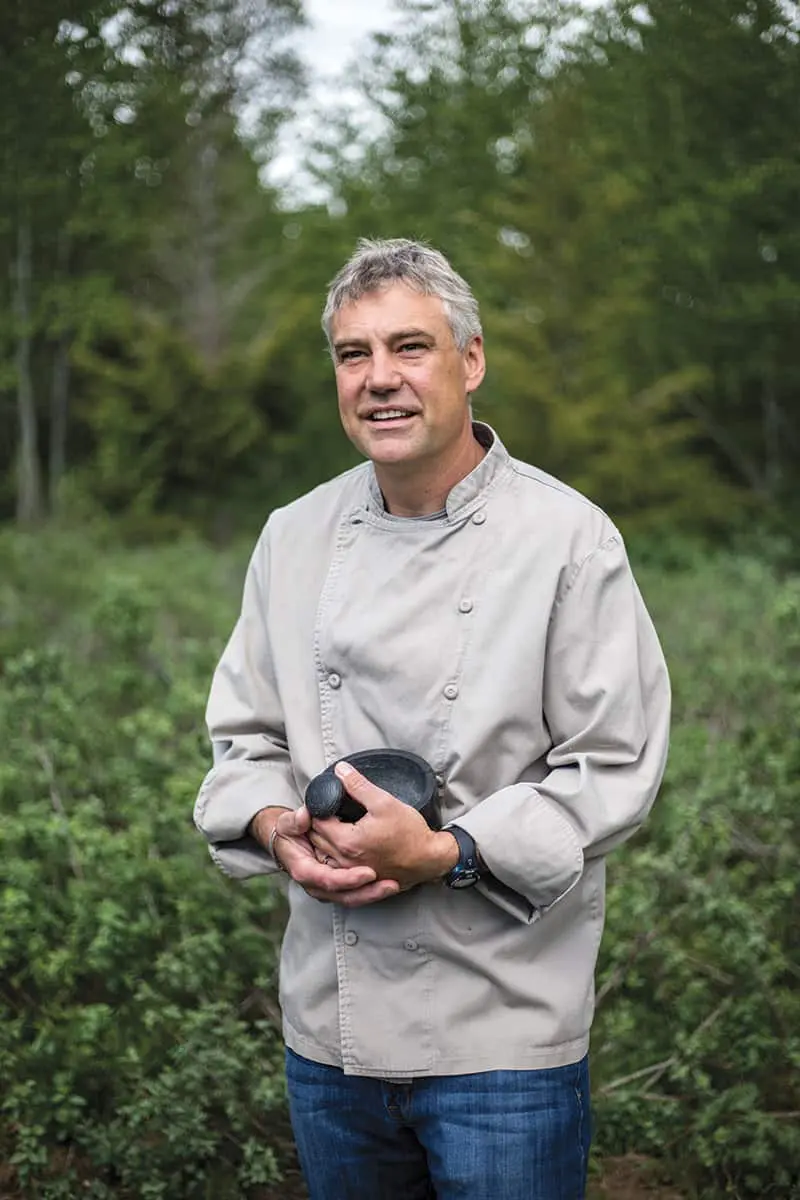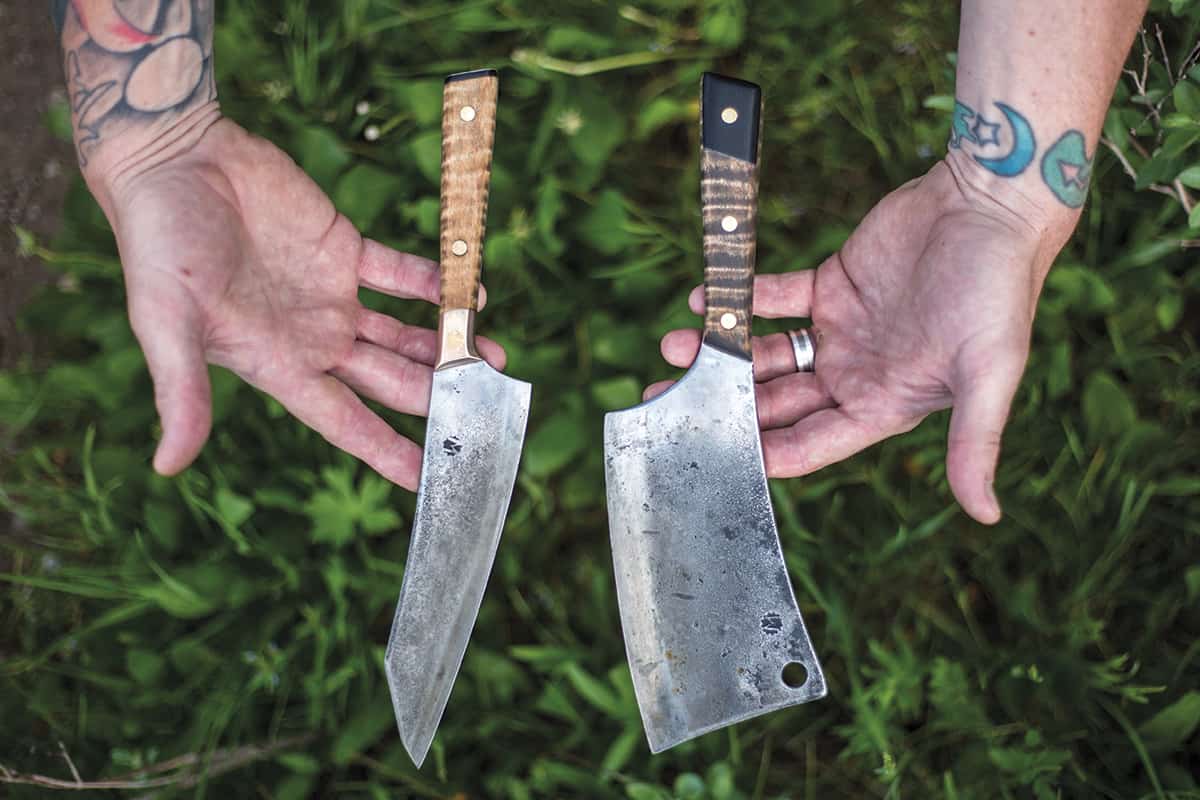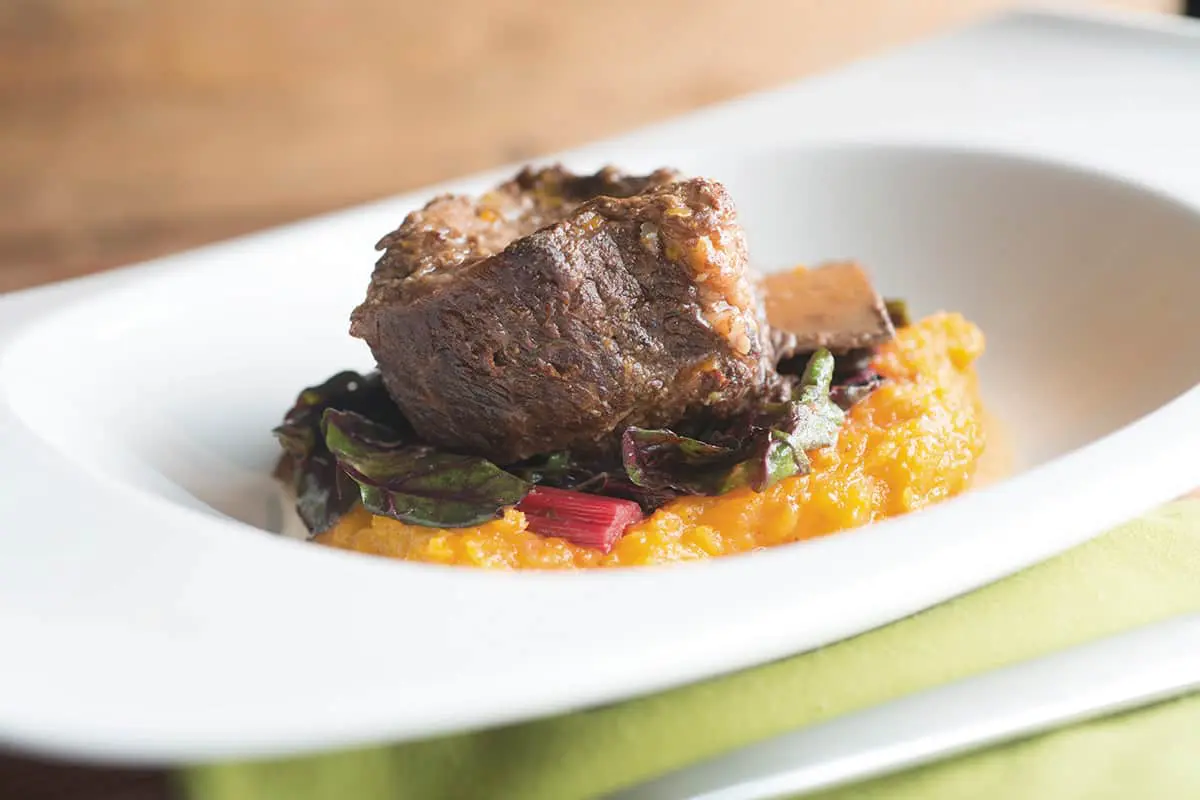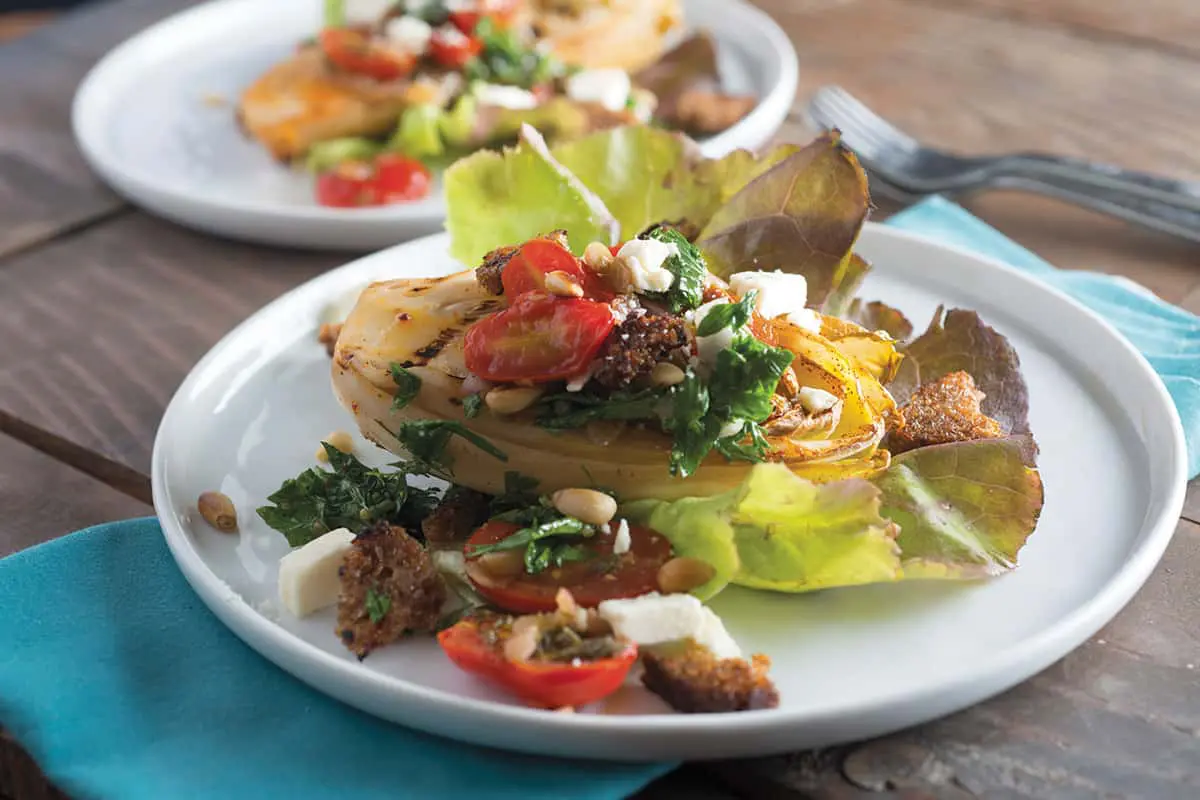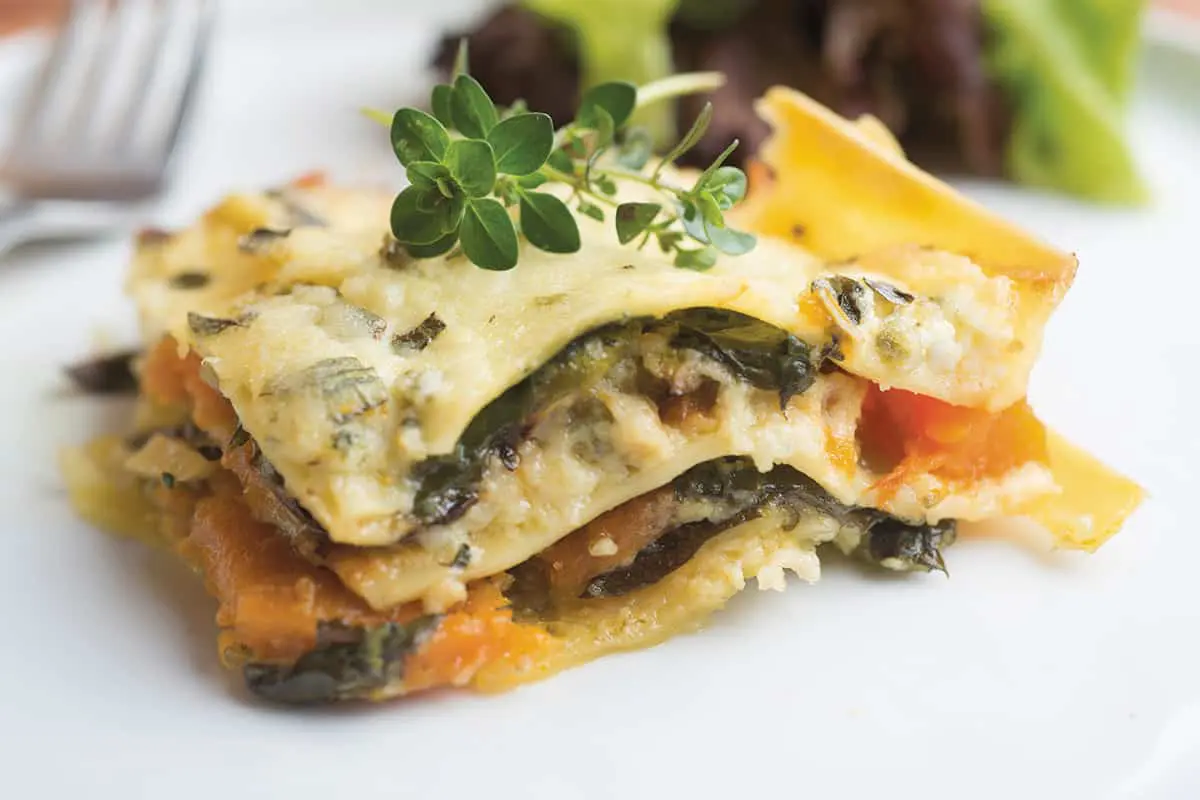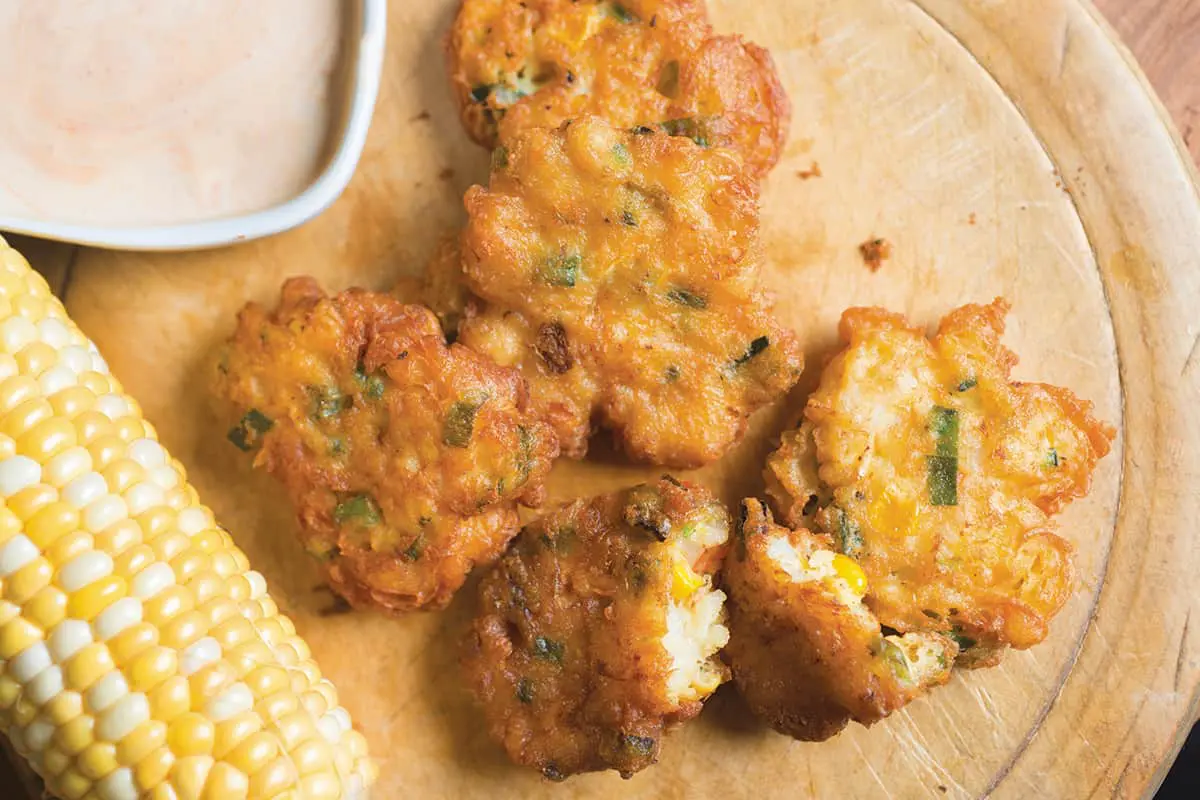By Christina Shepherd McGuire
Portraits by Ryan Dorgan
Recipe photography by Paulette Phlipot
–
Every August I feel like I just might turn into a tomato. This began when I finally started developing a taste for tomatoes in my early teens. For the entire month of August, my mother would buy beefsteak tomatoes from the “vegetable lady” and fresh buffalo mozzarella from the local Italian deli. Long before farmers markets, heirloom varieties, and fresh-off-the-vine golden snacking tomatoes were en vogue, my family would eat caprese salads (tomato, fresh mozzarella, basil, and imported olive oil) every night for a month. It’s what was in season at the time; and my mother knew that, very soon, the cold New England winter would deem fresh produce a thing of the past. We savored every moment.
“I think of food as medicine,” says David Hugo, the village chef at Grand Targhee Resort. “You always want to put the best stuff in, which is usually local, fresh, and close to the source. The closer to the source you can get it, the better the flavor and the more nutritious.” Hugo stresses the importance of eating with the seasons—a theme I’m familiar with and one that persists throughout conversations with Hugo and three other local chefs, who all use fall farmers markets to acquire the raw materials from which their masterpieces take form.
David Hugo
Growing up on a farm in Vermont, David Hugo learned to cook with what was available in the garden. Harvest time consisted of eating corn and making cider. His extended family would gather at his parents’ orchard to pick apples and make gallons of cider—some to drink, some to ferment into hard cider, and some to freeze for use in winter. He explains that the way his family ate back then was very different from the way most of us eat today.
“Today, people look up a recipe, then go out and buy all the ingredients,” Hugo says, explaining that a more historical approach is to develop a recipe that highlights the crop du jour as the main ingredient.
After graduating from the Culinary Institute of America in Hyde Park, New York, Hugo traveled to France and Italy to cook and experience cultural eating. But upon returning home, he realized that he wanted to concentrate on American cuisine and regional cooking. “Haute cuisine was cool, but I had to bring a big toolbox to work to make elaborate meals,” he says. It got him thinking … What really is food? Why do people eat? And what kind of food do you want to put into your body? To the Vermont native the answer was easy: local and seasonal.
And no farm in the nation does “local” better than Shelburne Farms in Vermont, where Hugo spent twelve of his cheffing years. The 1,400-acre working farm, established in 1886 on the shores of Lake Champlain, now operates as a nonprofit, complete with four historical buildings, an inn, and an on-site restaurant. The operation shares its working farm and historical property with the community, which uses it as a campus for learning environmental, economical, and cultural sustainability practices.
Hugo came to the Tetons directly from this locavore hub, creating menus for Grand Targhee that feature regional food, such as 460Bread and produce from Clawson Greens (a hydroponic farm in Tetonia run by Dave Ridell and created out of a full-size shipping container). His downtime spent with his wife, Lauren, and son, Olin, consists of visiting the local farmers markets and tending to his family’s small garden, just like he did growing up.
—
Bison Short Ribs with Sautéed Rainbow Chard and Ancho Mashed Buttercup Squash
—
As a child in the garden, Chef David Hugo’s favorite squash was the buttercup because of its sweet taste. And slow-cooked short ribs are always comforting on a cool autumn night.
—
For the short ribs:
Four 8-ounce pieces local bison or beef short ribs
1 tablespoon vegetable oil
3/4 teaspoon fine sea salt
1/2 teaspoon black pepper
4 medium carrots, finely chopped
2 medium onions, finely chopped
2 garlic cloves, finely chopped
2 cups tomatoes, diced
1 1/2 cups dry red wine
4 cups brown veal stock (can sub beef or chicken stock)
2 sprigs fresh thyme
5 bay leaves
2 tablespoons balsamic vinegar
- Put oven rack in lower third of oven and preheat to 250°F. Pat beef dry.
- Heat oil in a wide (12-inch-diameter) heavy pot over moderately high heat until hot, but not smoking. Brown beef on all sides, turning with tongs, about 8 minutes. Transfer to plate and sprinkle with 1/4 teaspoon salt and 1/4 teaspoon pepper.
- Add carrots, onion, and garlic to oil and cook uncovered over moderate heat, stirring occasionally until softened, about 5-10 minutes. Stir in tomatoes and wine and bring to a boil, stirring occasionally until sauce reduces slightly, about 8 minutes.
- Add veal stock, thyme, bay leaves, vinegar, remaining salt and pepper and bring to a simmer. Skim fat from surface, then add beef along with juices and cover pot with a tight-fitting lid. Transfer to oven and braise until tender, 6 to 8 hours.
- Remove short ribs from liquid. Skim fat from surface, discard thyme and bay leaves, and blend the sauce. Adjust the seasoning.
While beef is braising …
For the squash:
1 medium buttercup squash
4 tablespoons honey
1 teaspoon salt
6 tablespoons butter
2 tablespoons cream or milk
2 teaspoons Ancho chili powder
- Cut squash in half and remove the filling and seeds.
- Place honey, salt, and 1 tablespoon butter in cavity of each squash half.
- Roast squash skin-on, facing up, at the same temperature as the ribs, until soft and scoopable (approx. 5 hours).
- Remove halves from oven and cool.
- Carefully scoop the flesh away from the skin and combine it in a mixing Discard remaining skin.
- Add butter, cream, ancho powder, then mash squash with a potato masher until smooth. Add salt to taste.
For the chard:
2 bunches fresh rainbow chard
2 tablespoons olive oil
1 clove garlic, sliced
Pinch of dry red chili flakes
1/4 teaspoon whole coriander seeds (optional)
- Rinse chard leaves. Tear or cut away stalks from the leaves. Cut stalks into 1-inch pieces. Chop leaves into 1-inch-wide strips. Keep stalks and leaves separate.
- Heat olive oil in a saute pan on medium-high heat. Add garlic slices, chili flakes, and coriander seeds (if using) and cook for 30 seconds, until
- Add chard stalks. Turn heat to low. Cover and cook for 3-4 minutes.
- Add chard leaves, toss with oil and garlic in the pan. Uncover and cook 3-4 minutes more. Turn the leaves and the stalks over (you may need to add water) and cook until al dente.
To serve, place a scoop of squash down first, top with a mound of chard, layer with short ribs, and finish with sauce.
Jarrett Schwartz
As a private chef, Jarrett Schwartz cooks a little bit of everything—from raw fish to Asian-influenced fare to local cuisine. Most of his repeat clients give him free range to create dishes from foods like Colorado elk and bison, local Lockhart Cattle steaks, and the summer’s freshest farmers market finds. “I’m there [at the farmers market] early to get first pick,” he says. “If I see turnips and carrots that week, that’s what’s on the menu. If it’s green tomatoes, I incorporate them in salsas and vinaigrettes.”
A long-ago transplant to the town of Jackson, Schwartz has pioneered nine restaurants—including Mizu (now Sudachi) and Blue Kitchen (now The Kitchen)—most of which are running strong today. He serves as a consultant for several local restaurants, including Sidewinders, Persephone, and Picnic, where he develops seasonal menus, organizes kitchens, and trains staff. He explains that every year the farmers markets get better and better, and this influences his summer menus.
“When I do a menu change, I think of what’s in season,” Schwartz says. “Maybe it’s lightening up a fried chicken sandwich at Sidewinders with pickled veggies, or incorporating fresh peas and pea sprouts into summery salads at Persephone.” When asked how he takes part in our sustainable food community, he has this to say: “I contribute by buying local produce and spreading the word, as a one-man-show, to clients and restaurants.”
Schwartz always looks forward to fall, when the farmers markets are stocked. “It’s like our summer,” he says. “Fun things come out, like endive, radicchio, and broccolini.” He also looks forward to getting over his August hump and spending more time with family to cook his favorite fall recipe, Lela Soup, named after his three-year-old daughter. This traditional chicken soup incorporates joys of the harvest, like Lacinato kale, turnips, carrots, onions, garlic, and bone broth made from chickens raised in Alta. Schwartz is proud that Lela will eat whatever he cooks, and that she participates in the process by salting her food to taste and cracking eggs. “Rarely does she get an organic Amy’s frozen pizza,” he adds—especially at this time of year.
—
Grilled Endive Salad with Warm Tomato Vinaigrette and Salsa Verde
—
Chef Jarrett Schwartz’s vegetarian dish is totally balanced, complemented by the bitterness of the endive, sweetness of the vinaigrette, and the saltiness of the feta.—
For the salad:
8 heads Belgium endive
2 tablespoons extra virgin olive oil
1 tablespoon Za’atar spice (Mediterranean spice blend)
Pinch of salt
1 slice hearty German rye bread
1 head butter lettuce, picked into large leaves
4 tablespoons pine nuts, toasted
1/2 fresh lemon
1 ounce feta, crumbled
- Slice endive in half lengthwise, toss with 1 tablespoon olive oil, Za’atar spice, and salt. Grill on hot grill, 2 minutes per side.
- Tear bread into small pieces. Heat remaining oil in pan until hot and fry bread until crisp, approximately 2 minutes.
- Reserve remaining ingredients for the salad.
For the vinaigrette:
8 quarters roasted tomatoes or 3 ounces sundried halves, packed in oil
3 tablespoons extra virgin olive oil
1 shallot, diced
3 tablespoons sherry vinegar
Salt
2 teaspoons sage, chopped
- Saute tomatoes in 1 tablespoon oil until warm. Add shallots to pan. Deglaze with sherry vinegar. Remove from heat and add pinch of salt, sage, and 2 tablespoons of oil. Mix to combine.
For the salsa verde:
1 bunch Italian parsley
2 ounces fresh dill
1 shallot
1 teaspoon Dijon mustard
1 pinch dry red chili flakes
1 teaspoon capers
3 tablespoons champagne vinegar
1/2 cup extra virgin olive oil
3 teaspoons sea salt
- Finely chop the parsley, dill, and shallot. Combine all ingredients to meld flavors.
To prepare the salad, arrange butter lettuce on a plate. Top with endive, warm tomato vinaigrette, feta, and toasted pine nuts. Finish with a squeeze of lemon, salsa verde, and fried bread.
Christian Hanley
For Christian Hanley, being a restaurateur is a family affair. “There is zero separation for us,” he says. “Food is what we do all day long.” Hanley and his wife, Lisa, bought Forage in January of 2015 as a way for the family to relocate back to Driggs, where Christian spent his time ski bumming in the 1990s. A graduate of the New England Culinary Institute, Hanley had cooked regionally in the Tetons before meeting Lisa and opening three restaurants in Arizona for a private family.
The couple’s two children, Maddie, age 8, and Ollie, age 6, don’t know life without food at its very core. The kids help out in the kitchen at home by making their own breakfast and preparing their lunches for school. They also take the bus to the restaurant after school to help with kitchen prep (after homework is done, of course). But for their parents, it’s less about having the kids participate in family chores and more about engraining in them an appreciation for everything “food.”
Throughout the year—and especially during harvest season—they take a family night to prepare and cook a dinner together at home. “The point is to make something from scratch that came from the earth, seasonally and locally,” explains Hanley. The family’s menu revolves around what’s available in a given week. “I’m a big fan of autumn,” he says. “When the ingredients begin to change, my style of cooking changes, too. That’s when I start to incorporate braising, and cooking with stronger flavors.”
Along with stronger flavors comes new taste sensations for the kids. Hanley believes they need to see a food three times before they’ll try it and enjoy it. The first time, he’ll introduce it on their plates; the second time, maybe they’ll push it around with their forks; and on the third time, they are expected to take a bite to at least try it. “We call it a ‘thank you’ bite,” Hanley says, “to give thanks because we made it together.
As a person who acknowledges that he is constantly “taking from the system,” sustainability weighs heavily on Hanley’s mind. He believes that maintaining the local food economy is something that will come into question as the population in the Tetons increases. Improving on efficiencies is something he tries to take part in.
“Linking us all together [farmers, ranchers, and restaurants] is an efficiency in itself,” he says. And conversations are beginning to happen. This summer, Hanley partnered with Snowdrift Farms in Victor to provide weekly farmers market specials made from the farm’s harvest. “This [planning] gives us a full outline for June, July, August, and September. That’s four months that we are in the circle!” But he still ponders a long-term solution, one where restaurants of a certain size will need to create their own food supply. And with two bright young stewards at their side, there’s no doubt the Hanleys will be leading the charge.
—
Homemade Harvest Lasagna
—
At Forage, Christian Hanley and his wife, Lisa, love lasagna because “the fillings can change with seasonality and mood.” This is their harvest rendition.
—
For the dough:
16 ounces all-purpose flour
10 egg yolks
2 eggs
1 tablespoon extra virgin olive oil
2 tablespoons milk
- Mound flour in a large mixing bowl and form a well in the middle.
- Pour remaining ingredients into the well.
- With fingers, swirl wet ingredients gently in a circle, incorporating the flour slowly. Be careful not to let wet ingredients flow over the top of flour well.
- Once wet ingredients are incorporated, the dough will be sticky and look flakey. Turn out onto a floured work surface.
- Knead dough in a forward motion with the palm of your hand and then reform into a ball. (Unlike bread dough, you are not folding it over on itself.) Continue to knead and reshape for 15 minutes. When dough is smooth and springy, you are finished. If not, keep kneading. You can’t overknead!
- Cut ball of dough into 3 equal parts, sprinkle with flour, wrap in plastic, and let rest on counter for 1 hour.
For the filling:
2 eggs
Two 8-ounce packages mascarpone cheese
Two 8-ounce logs goat cheese
Two 8-ounce pieces Manchego cheese, grated
Pinch of sea salt
Pinch of cracked pepper
1 tablespoon marjoram, chopped
1 tablespoon rosemary, chopped
1 tablespoon thyme, chopped
3 tablespoons extra virgin olive oil
2 parsnips, peeled, cut, seasoned, and roasted
1 butternut squash, peeled, cut, seasoned, and roasted
2 summer squash, cut, seasoned, and roasted
1 bundle spinach, washed and julienned
- On a floured work surface, roll dough balls into 3 thin pasta sheets the size of your dish (9-inch-by-13-inch).
- Combine eggs, cheese, and salt and pepper in a bowl and whisk together. Combine roasted veggies in a separate bowl.
- In the bottom of your baking dish, spread 1 tablespoon oil. Place 1 sheet of dough on the bottom. On top of dough, spread 1/3 cheese mixture and 1/3 herbs. On top of the cheese, spread 1/2 roasted vegetables and 1/2 julienned spinach.
- Continue layering in this fashion until you reach your last piece of dough. Place it on top, spread on 1 tablespoon oil and the remaining cheese. Sprinkle with rest of herbs.
- Cover with foil and bake covered at 350°F for 45 minutes. Uncover and bake an additional 15-20 minutes for a crispy top.
- Let rest 30 minutes before cutting.
Joshua Governale
Joshua Governale grew up in Orange County, California, right next to a pumpkin and corn farm. During the fall harvest, the field mice would evacuate the farm’s property and relocate themselves in neighboring homes. As a “thank you”—or more specifically a condolence gift—the farm would leave a large bag of fresh produce at the Governales’ doorstep every autumn. Governale remembers his mother’s pumpkin bread, his grandfather’s pumpkin ravioli, and minestrone soup, for which the family utilized the “kitchen sink of veggies” that came available each fall. (As for the mice, well, they got the raw end of the deal, often meeting their demise during a run-in with neighborhood cats.)
Today, Governale blends his Sicilian roots with a slight Cajun flair, stemming from his Italian grandfather’s New Orleans upbringing, as he crafts dishes for his two Jackson restaurants, Café Genevieve and Orsetto. At Café Genevieve, he creates affordable home cooking with a Southern flair; at Orsetto, his moderately upscale Italian fare incorporates family recipes and the old-school flavors of his youth.
Similar to Hanley, Governale stresses the importance of efficiencies within the local food system. Conveniences—like the proximity of Vertical Harvest to his restaurant—help him participate in the culinary circle while cooking up to 1,000 covers a day at Café Genevieve. At Orsetto he uses Vertical Harvest’s tomatoes, micro greens, and micro basil in dishes like panzanella, preordering two weeks out so he knows exactly what he’ll be getting. Governale meets weekly with Nona Yehia and Sam Bartels of Vertical Harvest, giving them feedback on what they can do better to accommodate his restaurants.
When Governale grants himself a pause—which are few and far between—he continues to contribute to the food circle by tending the 17-by-17-foot raised garden bed at his Rafter J home. And while his novice gardening skills have nothing on his professional cooking prowess, he finds it important to take time to connect with his fiancé, Jennifer, and his daughter, Delilah, as together they learn what grows best in a climate more suited to making gelato than to growing a juicy beefsteak tomato.
—
Crawfish Beignets with a Spicy Remoulade Sauce
—
This recipe adopted from Chef Josh Governale’s grandfather features (in true harvest fashion) a handful of fresh-cut corn on the cob.
—
For the beignets:
1/2 cup all-purpose flour, sifted
9 teaspoons baking powder
6 teaspoons kosher salt
6 eggs
1 1/2 cups milk
18 ounces crawfish tails, shelled and cut into pieces (can sub shrimp)
1 tablespoon Cajun seasoning
3/4 cup poblano peppers, finely chopped
3/4 cup green onions, finely chopped
3 tablespoons garlic puree
1 handful of corn, freshly trimmed from the cob (approx. 1 1/2 cups)
1 32-ounce bottle Spectrum sunflower oil or other high-heat oil
- Combine flour, baking powder, and salt in a large metal mixing bowl.
- In a separate bowl, whisk eggs until frothy; add milk, crawfish tails or shrimp, and Cajun seasoning.
- In a third bowl, combine peppers, onions, garlic, and corn.
- Incorporate all ingredients into the dry ingredients. Mix to combine. (The mixture should look like thick pancake batter.)
- Refrigerate for 1 hour.
- Place oil in a large Dutch oven and heat on stovetop to between 375°F- 440°F or heat oil in a FryDaddy®.
- With a small ice cream scoop, scoop and drop the batter, one by one, into the oil and fry until golden brown, about 8-10 minutes.
- Remove beignets from the fryer and place on a paper napkin to drain.
For the sauce:
1 cup mayonnaise
1/4 cup yellow mustard
1/4 cup prepared horseradish
1/4 cup lemon juice
1/4 cup capers, drained and chopped
1/4 cup scallions, chopped
3 teaspoons red Tabasco sauce
4 celery stalks
1/4 cup ketchup
Salt and pepper
- Puree all ingredients in a Vitamix® or food processor. Season with salt and pepper to taste. Refrigerate until served.
To serve, place 1 or 2 beignets on a small serving plate. Top with a dollop of remoulade.


